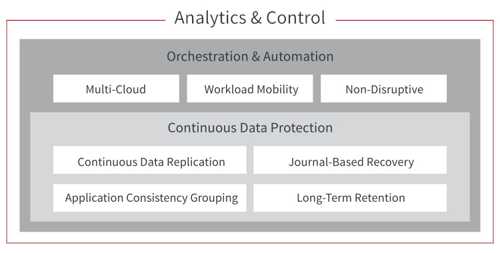ZertoCON: Zerto Unveiled 2019 Plans and Roadmap
Including integration with VMware VAIO framework, further enhancements to long-term repositories such as HPE StoreOnce, and development efforts for company, and Microsoft Azure
This is a Press Release edited by StorageNewsletter.com on May 30, 2019 at 2:28 pmZerto Inc. made a number of announcements in front of hundreds of customers and partners at the company’s annual ZertoCON conference, including the availability of a subscription licensing option for customers to purchase the IT Resilience platform.
IT Resilience platform
The company also announced details of its roadmap that includes integration with the VMware, Inc. VAIO framework, further enhancements to long-term repositories such as Hewlett Packard Enterprise Development LP StoreOnce, and the latest development efforts for the company and Microsoft Azure. Additionally, the company previewed results of its annual State of IT Resilience Readiness survey with IDC.
Ziv Kedem, CEO and co-founder, Zerto, announced that customers can acquire the firm’s solution either as a perpetual license or, now, as a subscription according to their business preferences. Purchasing software as OPEX instead of CAPEX can free up budget for projects that directly impact the business’ bottom line. In addition, for some organizations, OPEX purchases often follow a simpler approval path, as they are used to scale on an as-needed basis and offer the ability to have more flexibility with demand forecasting. The company now offers both pricing models so companies can make IT investment decisions based on features, efficiency and agility, rather than cost alone.
Rob Strechay, SVP, product, Zerto, announced in his keynote that the company has completed the initial certification of its vSphere Installation Bundle (VIB) for VMware’s vSphere APIs for I/O Filtering (VAIO) framework. He was joined on stage by Mike Adams, senior director, cloud platform product marketing, VMware, to share the details.
The firm’s certified VIB will be available for use with the company’s next major release, expected to be available in 2H19. The firm’s integration with VAIO will enable support for Secure Boot for vSphere hosts as well as creation of replication policies within vSphere’s storage Policy-Based Management.
Also in Strechay’s keynote, Zerto previewed some of the features and functionality that will be available with Zerto 7.5, which will be released in 2H19. Key 7.5 enhanced capabilities will include deeper integration with long-term repositories including the HPE StoreOnce Catalyst API. The 7.5 release also focuses on scale and performance with Azure and AWS, including native integration with Azure scale sets. Zerto Analytics, used for management of data and applications protected with Zerto, will include features such as the upcoming Resource Planner to provide predictive sizing for Azure, AWS or on-premises environments.
Phil Goodwin, research director, IDC, previewed the results of this year’s State of IT Resilience Readiness survey during his keynote. The survey included 500 respondents at companies with greater than 1000 employees and found that:
-
Data protection modernization is the top IT initiative for respondents over the next 12 months
-
Specifically, 38% will deploy new backup/recovery solutions within the next year
-
Cloud-based data protection solutions ranked as a second priority for respondents over the next twelve months
-
19% already plan to deploy DRaaS within the next year
-
For 91.3% of respondents using public cloud for data protection, the use of public cloud has had no impact, or has reduced their data protection budget overall
-
82.3% of respondents indicate data protection and DR are an important part of their IT and/or digital transformation initiatives
-
93.4% of respondents are likely to pursue convergence of backup and DR tools as a way to eliminate redundancy
Source: IDC’s Business Resilience Readiness Thought Leadership Survey, May 2019
Goodwin’s recommendations based on these results highlighted making sure that all applications are covered by a resilience plan and closing the data protection gap with reliable solutions can help to avoid unrecoverable data.














 Subscribe to our free daily newsletter
Subscribe to our free daily newsletter

